Although not as famous as its coastal brother, Taunton, not Boston, is the largest city in term of square mileage in Massachusetts. With one foot firmly placed in Massachusetts and the other straining towards Rhode Island, it is very much a city of two personalities. Rural areas quickly drop off into a more urban setting, and people whisper about ghosts on stoops and storefronts. Like many of the surrounding towns, it has a strong history of haunted buildings and cemeteries, but Taunton’s real terror emanates from its decaying asylum, a symbol of Massachusetts’ desire to conserve its stone palaces and a representation of how it never quite gets it right.

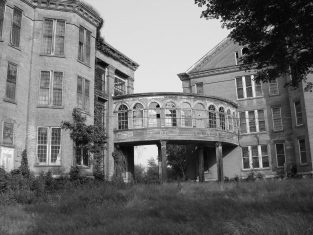
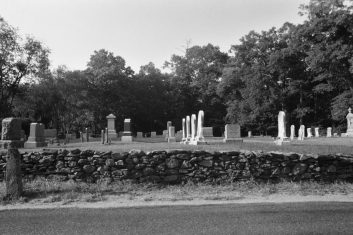

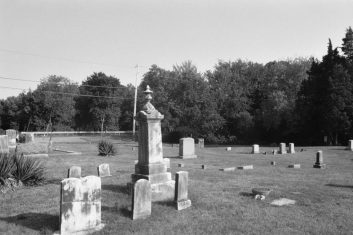
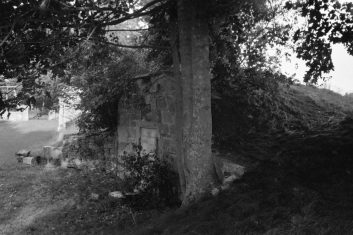
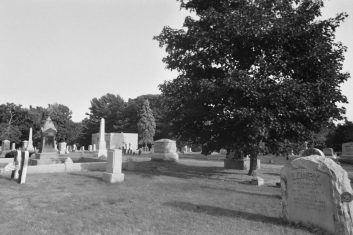
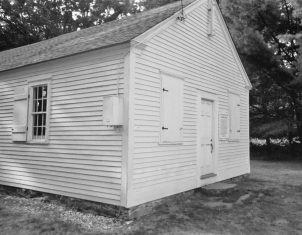
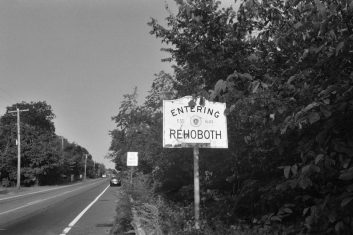
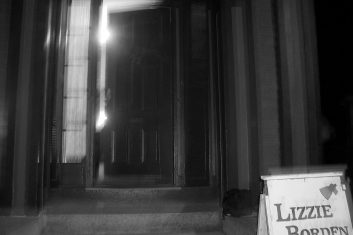
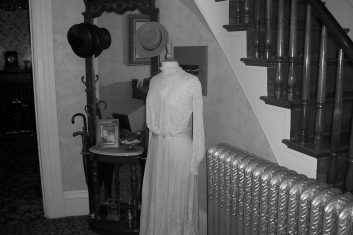
Taunton State Hospital

Taunton State Hospital first opened in 1854 to alleviate the strain felt by the state hospital in Worcester. Like many of the asylum built in Massachusetts, its architect, Elbridge Boyden, based his design for the building on the revolutionary ideas of Dr. Thomas Kirkbridge who had begun to inspire some of the most beneficial institutes in the country, most of which are now said to be haunted. Kirkbridge’s legacy seems to be his knack for creating buildings that trap spirits and attract paranormal adventure seekers. His flagship, Danvers State Hospital is widely considered the most haunted building in Massachusetts, and the number of structures in the state thought to be haunted within the Triangle has led to rumors of Kirkbridge’s involvement in the occult.
The concept of the hospital was to build a place where patients could experience a rural setting and fresh air and to allow them to use the grounds of the facility for such occupational therapies as working the land and growing crops. It was revolutionary in its day. Instead of darkened rooms emanating whispered cries, patients were encouraged to heal by reaching out and reconnecting with the natural world. The 132.5 acre plot of land, with several small bodies of water, seemed perfect. The design of the main building itself was created to have a centralized administrative section and nurses station that could then be dispatched into the hospital through legs off the main building, with the worse patents being at the end of each leg.
The hospital itself consisted of fifteen buildings, few of which are still in use. Its history tracks the ideas and attitudes towards mental health over the past century and a half. Over the years it was always on the cutting edge of experimentation. In the 1870’s, the doctors submerged patients in water tanks and then subjected them to extreme cold in an effort to jolt them out of their ailments. In the first half of the 20th century, frontal lobotomies were popular. In the second half electric shock therapy became popular, and over the next few decades, thousands of patients received high doses of electricity in an attempt to rewire something broken but not fully understood.
The hospital’s clientele through the years was diverse, and the nature of the sick varied. Its most famous resident arrived in 1892 when Lizzie Borden was held there for several days following her arrest for the murder of her parents in their Fall River home. Although she was acquitted of the crime, her place in history was sealed. It is rumored a doctor at the hospital examined her and declared her to be insane, although no record of the meeting exists and the evidence was not brought up her trial.
The majority of the buildings were closed in 1978 due to construction flaws and rumors of abuse and neglect. In addition to housing several administrative departments for the state, the hospital served for years as a secure lockup and mental health facility in use by Massachusetts’ Department of Youth Services, Department of Social Services and the Department of Mental Health. It housed convicted juvenile offenders and offered care to wards of the state and the youth of Massachusetts with specific and nonspecific mental health issues that had a history of violent behavior. While it was a far cry from the horrors seen at the height of its capacity, the modern hospital still made employees uneasy. In 2004, a report was released that claimed 97 percent of staff at the hospital claimed dangerous conditions there risked the safety of patients and staff and that many had considered leaving because of the state of the facility.
“I hear the stories about the ghost,” said Leslie in 2005 while still an employee. “I don’t know about that. It’s possible and nothing in that place would surprise me. I just don’t feel safe there. Maybe it’s the same in all these places, but I get uneasy. At night there is sometimes a silence that makes me want to hum to break it up. Other times I feel the place is going to explode because there is so much juice.” Leslie has since left.
The hospital has changed its name several times over the years, always in compliance with the attitude of the era towards mental health, but it was one of its most recent nicknames, Taunton Secure, that added to the intimidating presence and created fear among the residents and staff. Anyone who has spent time there, on either side of the glass, has been touched, but unlike other hospitals and prisons in the state, the victims speak freely.
The ghost that live there are hard to track down. They are a varied collection, making a statement about the misery that was suffered on the grounds for decades. Memory rests on top of memory on top of grief there, and those who believe tragedy breeds negative energy that can remain in a place need only walk near the building to have their argument reinforced.
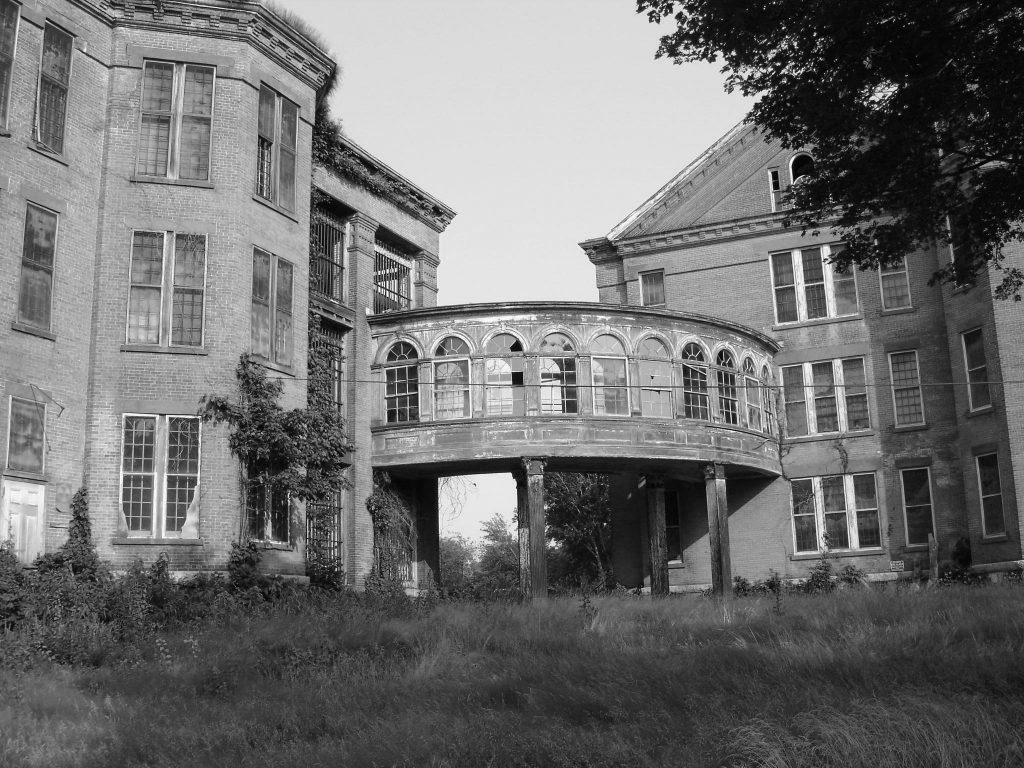 The grounds and the architecture of the buildings have been described as Gothic and beautiful, but the whole property is now off limits to the people with cameras that used to stroll the area and run road races across its lawn. Once it did attract locals. It was a place to relax and enjoy a touch of nature and even had tours of the grounds to encourage the people to accept the stone and steel structure. “The place is beautiful,” says Sara, a longtime resident of Taunton. “Or it was. It looks like it feels now. Growing up down the street we loved to walk around by there. But there were places that just felt wrong. We would walk and then look at each other and want to leave. The place is evil.” Stacy felt the same way about the grounds. It changed quickly for her as well, especially at night. “I remember one night I drove through the hospital grounds during a full moon and some of the patients were screaming in the night. Very spooky place.” Although she never experienced anything, she admits she kept her distance when the odd feelings would come on.
The grounds and the architecture of the buildings have been described as Gothic and beautiful, but the whole property is now off limits to the people with cameras that used to stroll the area and run road races across its lawn. Once it did attract locals. It was a place to relax and enjoy a touch of nature and even had tours of the grounds to encourage the people to accept the stone and steel structure. “The place is beautiful,” says Sara, a longtime resident of Taunton. “Or it was. It looks like it feels now. Growing up down the street we loved to walk around by there. But there were places that just felt wrong. We would walk and then look at each other and want to leave. The place is evil.” Stacy felt the same way about the grounds. It changed quickly for her as well, especially at night. “I remember one night I drove through the hospital grounds during a full moon and some of the patients were screaming in the night. Very spooky place.” Although she never experienced anything, she admits she kept her distance when the odd feelings would come on.
The sentiment is echoed by residents in the town. Taunton State Hospital inspires those kinds of feelings in people. Older residents remembering the beauty of the place, while others remember hearing screams from down the street, even after the main buildings were closed. Many see it as a negative mark against the town. Mark lived in the town for over thirty years but now lives in the other side of the state. “I’d see lights over the place. I’m not willing to say it was a ghost or something cause I don’t know about that stuff. I just got sick of people telling me my town was haunted or weird. They’d hear I was from Taunton and the first thing they’d want to know about was the hospital. It’s what the people in this state know about us.”
The reputation of the hospital has changed over the years. It shifted from the place where the insane people were to the place where the ghosts haunted. No one can remember when the stories began, but they have now taken on a life of their own. Ask for a list of haunted places in Massachusetts, and the grounds of Taunton always come up. Its legacy remains in the realm of Danvers and Met State, and of all the old asylums, more people have stories from Taunton. It is not just an old haunted asylum, it is a place people still remember seeing things they could not explain.
The grounds, once cherished and enjoyed, are the subject of many of the stories. Long before it closed, people saw things they could not explain. Spirits are said to walk outside the building, often seen as mist or dark clouds. Reports come in of an elderly man crouching and stroking the grass. He wears simple clothes, usually said to be jeans and a dark shirt, making him seem more like a former employee than a patient. When approached, we smiles and disappears. Others have seen people in light pants and white shirts. While pictures of the people who made Taunton its home are hard to come by, some feel, at least by stereotype, these souls are those of former residents. Many of the stories that come from the hospital read like horror, but many who lived there had their best, clearest days involved with the occupational therapy Taunton offered. The positive energy might also survive. It seems those who sought comfort in the hospital and received it still find their way back.
 Other ghosts seen on the grounds are not so friendly. In a cemetery on the property one resident had an experience that changed his life. As a juvenile from the area arrested on drug charges, he was serving a stretch before leaving for a residential treatment facility. He was able to find a way out of the building and decided to hide in the cemetery to lay low and plan where he would spend the night. As he crouched near a tombstone he felt cold hands on his shoulder. Thinking he had been caught, he raised his arms and turned around. There was no one there but he heard a faint voice whisper the word, “leave.” He walked back to the building barely able to breath and turned himself in.
Other ghosts seen on the grounds are not so friendly. In a cemetery on the property one resident had an experience that changed his life. As a juvenile from the area arrested on drug charges, he was serving a stretch before leaving for a residential treatment facility. He was able to find a way out of the building and decided to hide in the cemetery to lay low and plan where he would spend the night. As he crouched near a tombstone he felt cold hands on his shoulder. Thinking he had been caught, he raised his arms and turned around. There was no one there but he heard a faint voice whisper the word, “leave.” He walked back to the building barely able to breath and turned himself in.
While the youth fully believed his story to be true, some of the details might have been blurred due to his drug use and the excitement of his escape. According to the Danvers State Memorial Committee, an organization closely monitoring abandoned asylums and cemeteries in Massachusetts, there is no graveyard on the grounds. They report evidence of women patients sewing clothes for the deceased there, but claim most were buried in pauper’s graves in nearby locations, including the Mayflower Hill Cemetery. Other burial grounds have been sited near the hospital, and he may have been further away from the building than he originally thought.
Taunton State Hospital is more famous for the ghosts that stay inside the building. During its days as an asylum for the insane there were rumors of cult activity at the hospital. Some even say this caused its initial closing, although that has never been confirmed. Staff members would bring their more incapacitated patient down into the basement to conduct bizarre rituals to Satan. The stories even tell of several patients sacrificed and the appearance of the Devil himself. Regardless of the rumors, parts of the basement had unexplained markings on the walls for decades. Places like Taunton are mills for urban legends, and the story seems fantastical. What lends credibility to these stories are the numerous accounts of people who have gone into the basement and reported seeing the graffiti and having their own supernatural experiences. Staff, uniformed about the stories of what had happened there, speak of cold spots that moved with them whenever they were down there. Some saw a scuffling shadow or a ball of light that disappeared as if walking through the wall. Jacky saw a fog in the basement and left soon after. “They told me it was my imagination. They said it was an old place. The people that actually worked there, you know, worked for a living, said it was a ghost or something. I saw that smoky man down there twice, and the second time I quit. It wasn’t worth it.” Jacky says the smoky man was a little over five feet tall and consisted of a dark, solid hazy, in the form of a person. She was never able to see it dead on, but both times saw it dash in front of her as she moved along the floor.
One staff member claimed he reached the final step only to feel himself stop. He closed his eyes and felt as if he were experiencing the awful things that had happened there in vivid detail. “I heard and saw everything. I could smell smoke. I heard a drum playing and weird chanting, like devil worshipers.” He took a step back and was back on the stairs and the scene flashed away instantaneously. He quit the next day and still has trouble describing what he saw in detail. “I don’t even want to think about it, but I have nightmares. I only tell of what happened because it might make them go away.”
The evil does not stay in the basement though. Screams are heard from the areas where the electric shock treatments and cold therapies were conducted. Residents have had their lights turn on and off in the middle of the night. The abandoned or burnt down sections have rooms that are illuminated by light, although there are no working lights in those buildings. Some have even seem small children and disheveled adults peer down at them from place people are not supposed to still be in.
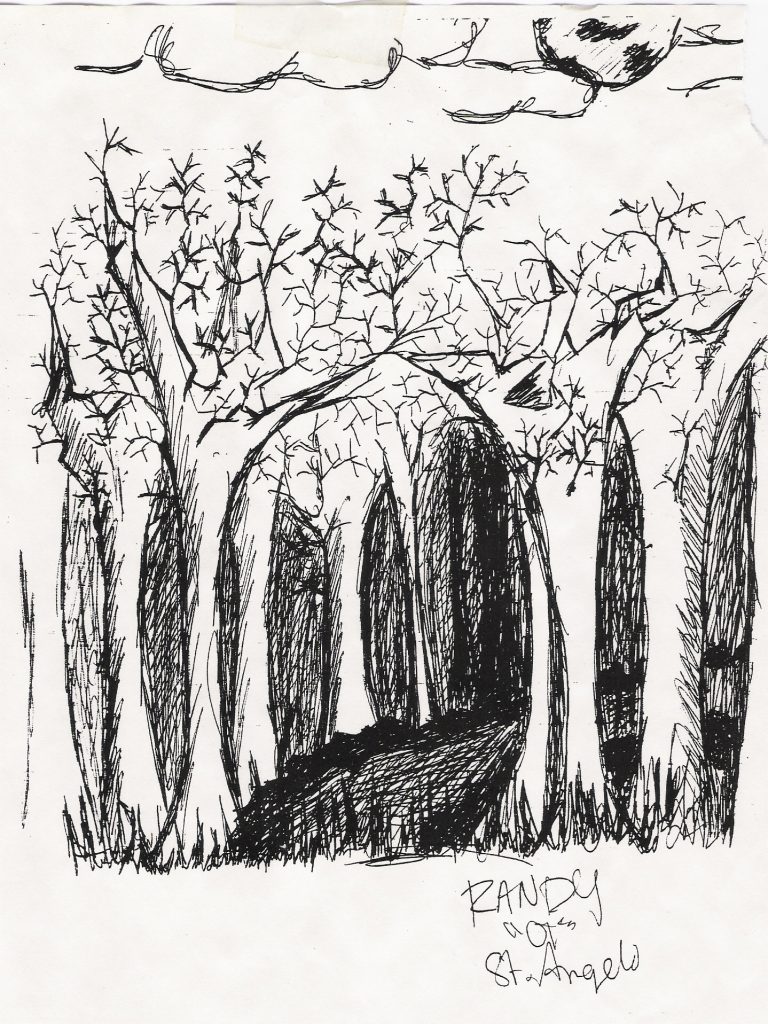
Many have also experienced a shadowy man who appears out of nowhere. At times he is not much more than a shadow having no specific form and moving as if crawling across the wall. Other times he is more solid although somewhat stretched out. Three things remain constant in the report however; his face can never be seen, he is always described as being male and he appears in the corner of the resident’s room in the middle of the night and stands as if watching them.
Shadow people are a newer theme in paranormal investigating, and the reports of these dark figures have been gaining momentum. In normal circumstances there is very little interaction with people as they tend to make their presence known as spots in the corner of the witnesses’ eye. These ghosts might be something more. They are frequently seen in areas of the Triangle, but almost always in cases where there has been another haunting. Theories abound about what they might be, and many in the field believe they are the mark of a demonic presence. They seem to feed of energy, be it from a resident or patient at a hospital like Taunton, or a ghost or spirit left behind.
In March, 2006, the main building suffered one of the largest fires in the state’s history, one of many the hospital has endured over the years. Although no one was hurt, more than 100 firefighters from eighteen departments were needed to finally bring the fire down. The main building, source of most of the haunted stories, was destroyed beyond repair, leaving the future of the entire hospital up in the air. Early reports claim the fire was set, but who caused the final blow to one of Massachusetts’ most notorious haunts will probably never be determined.
Since the beginning of 2002 these fires have happened in many of the asylums and hospitals throughout Massachusetts, and their explanation runs the gamut of the supernatural as well as inspiring the thoughts of conspiracy theorists. Some believe the energy left in these places has enough power to spark and cause a fire. Others feel the buildings, often abandoned, are perfect targets for arsonists or troublemakers. Still some feel companies looking to develop the land have set the fires to force the people out or to lower the price of the land.
The future is up in the air for the old hospital for the insane. People continue to come forward with their stories, talking about the days when patients talked to the wall, and uncomfortable staff pretended it meant nothing. In the Triangle the future is always uncertain, but one thing remains constant. Things in Southeastern Massachusetts have a habit of not staying dead and buried, and no matter what the hospital becomes, you can be sure a part of what it once was will rise again to remind the next generation of what once happened there.

